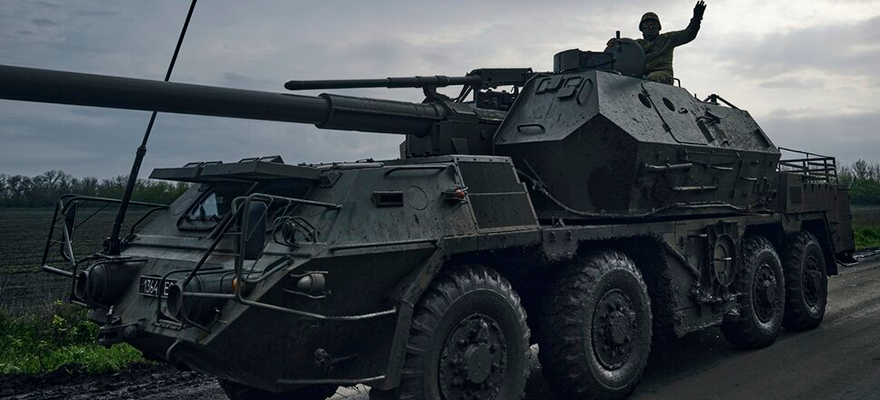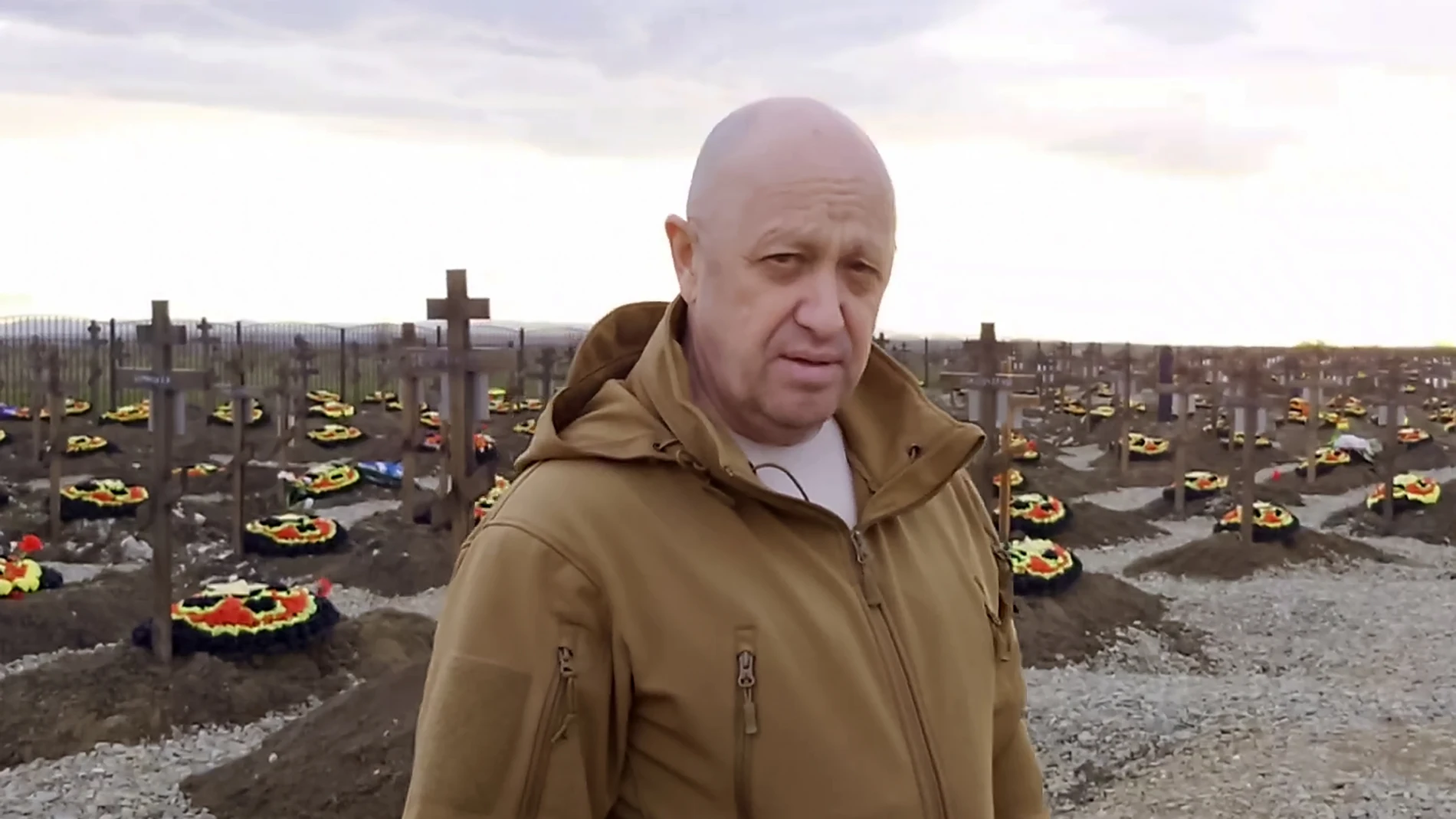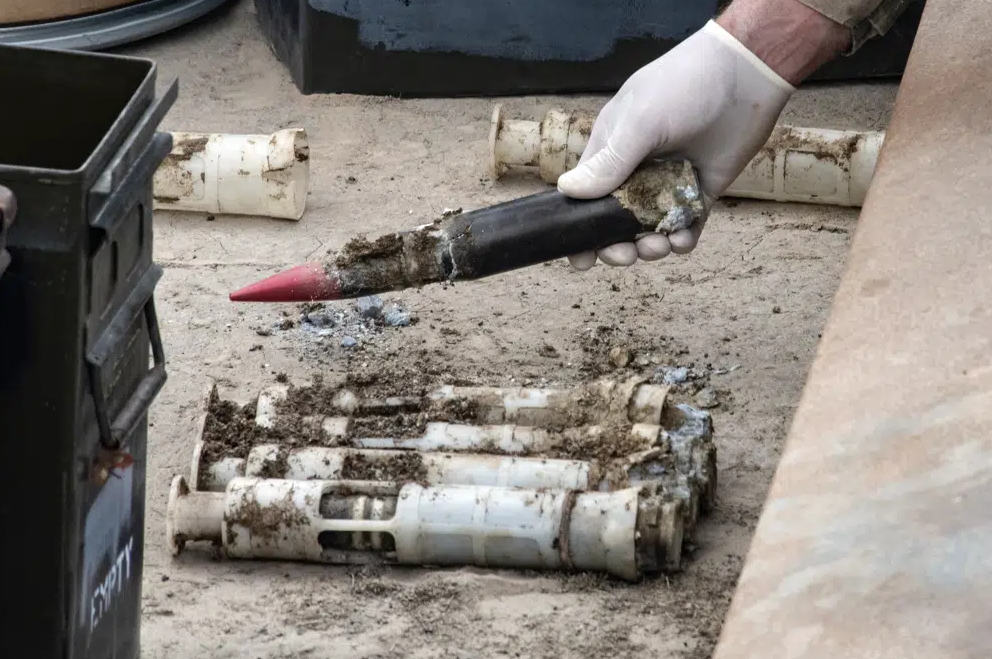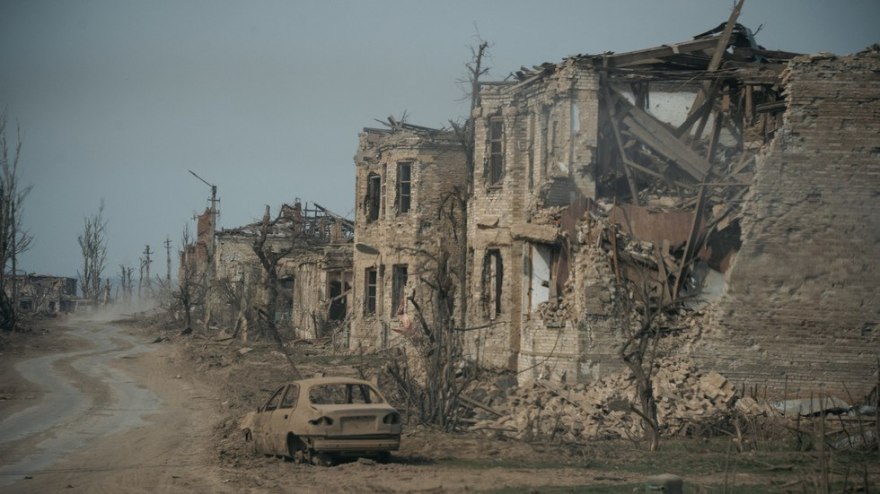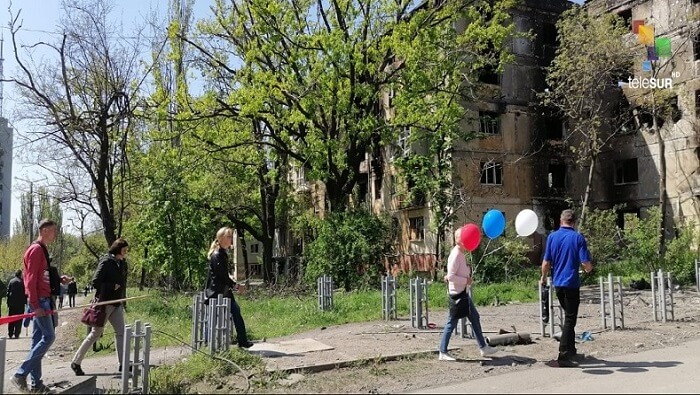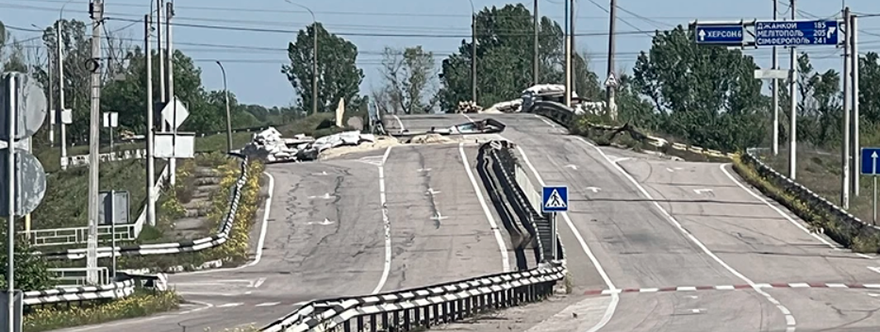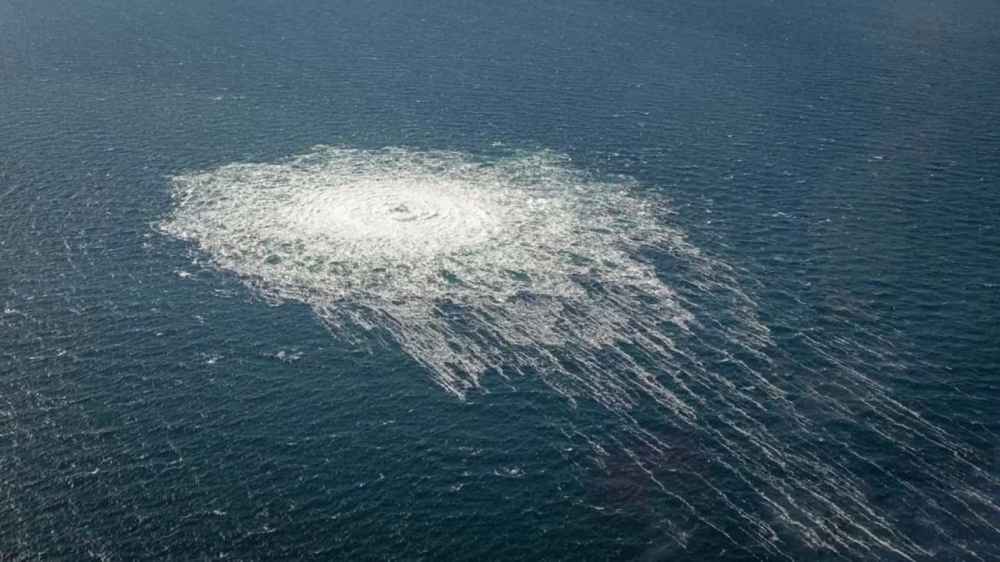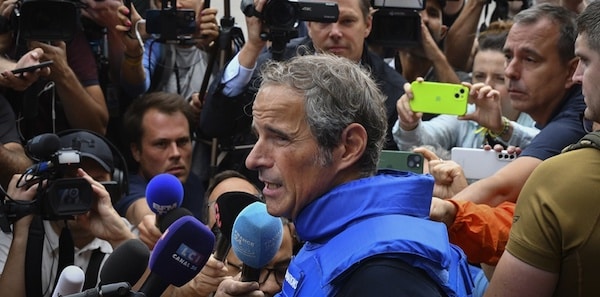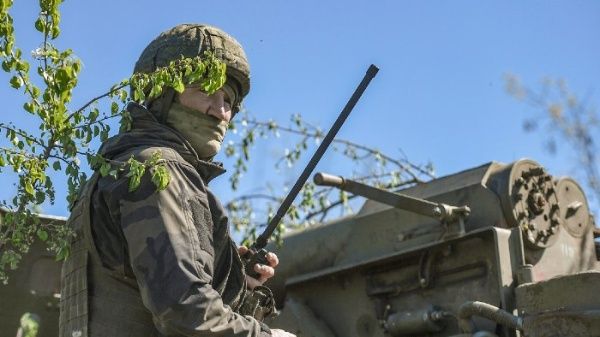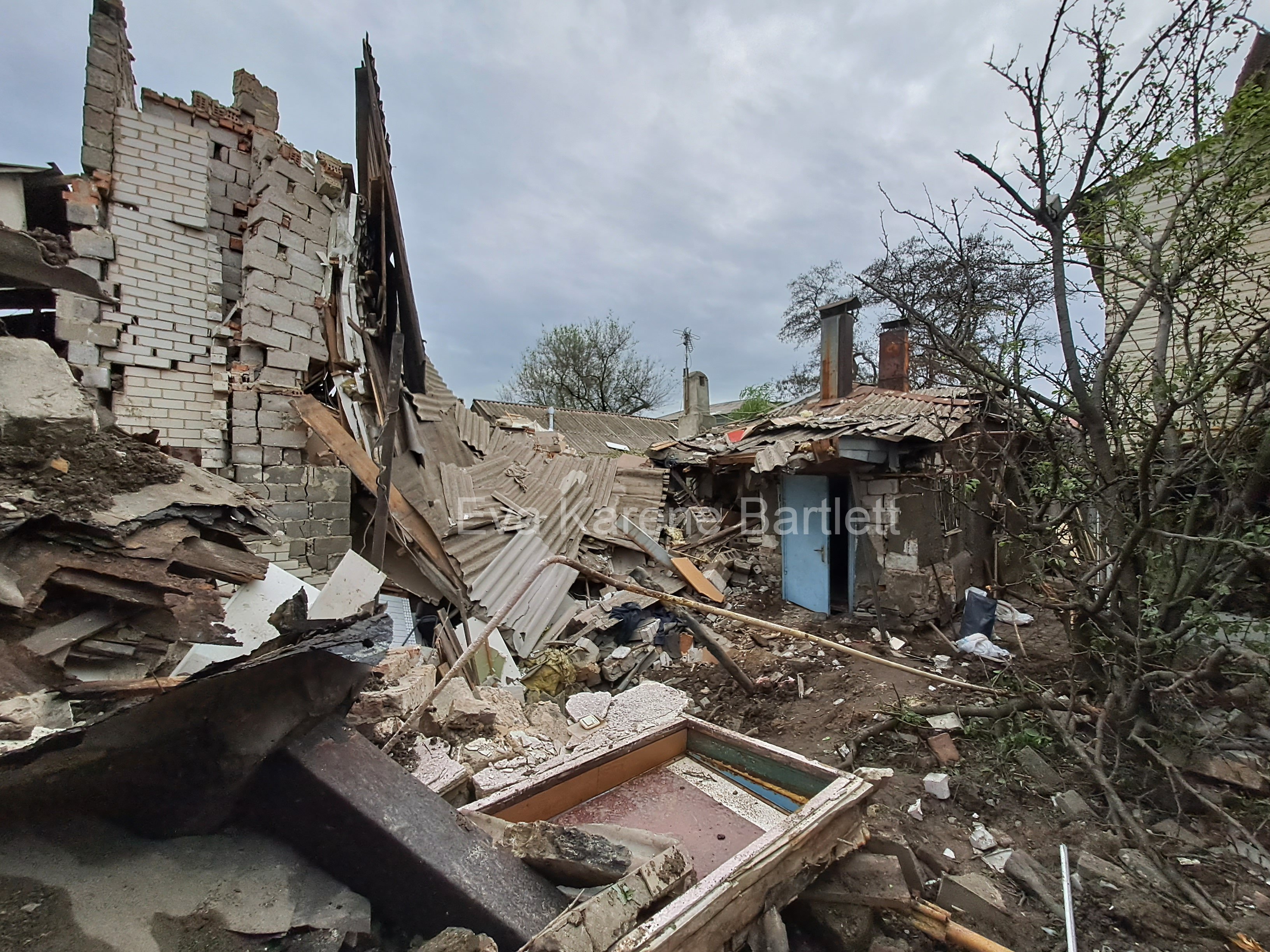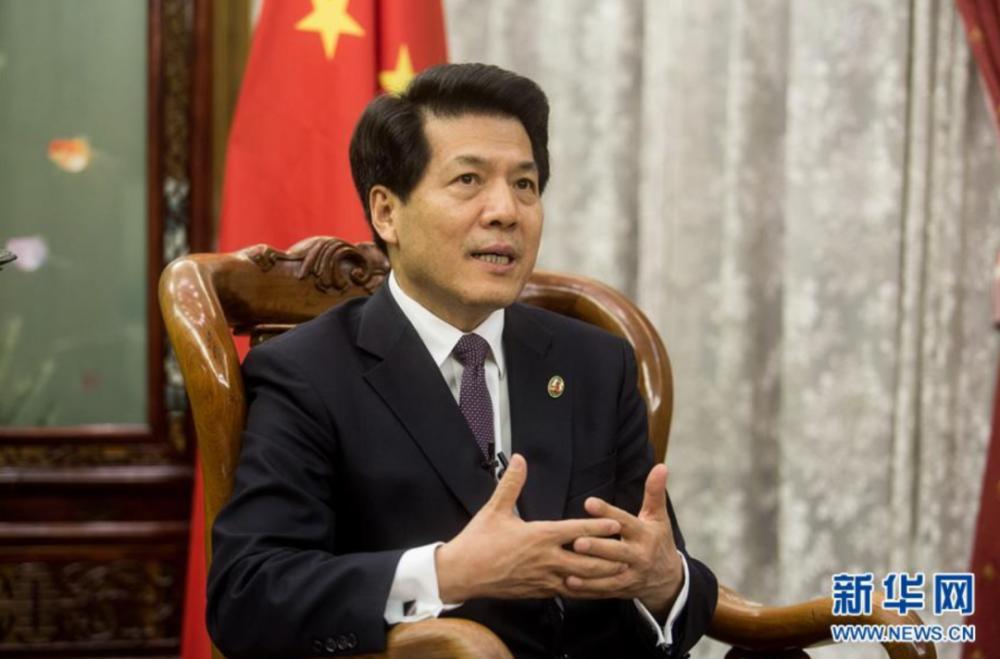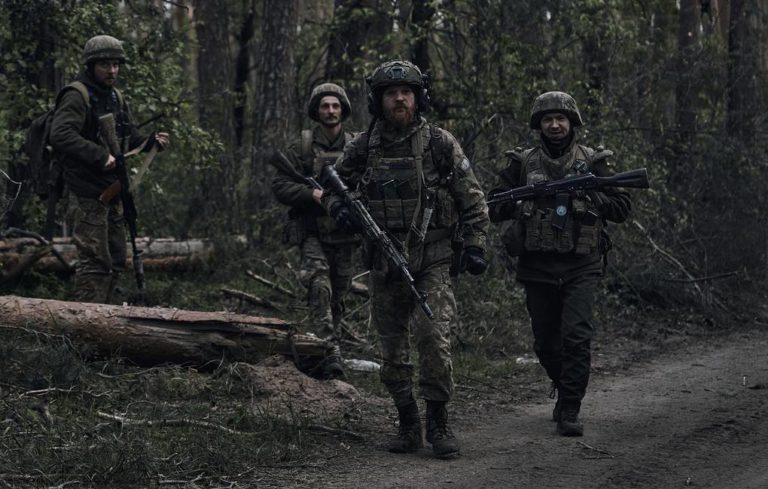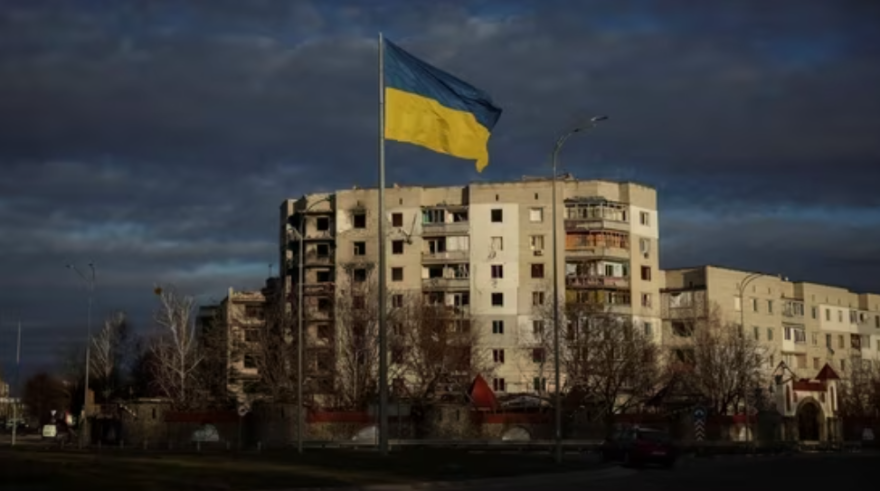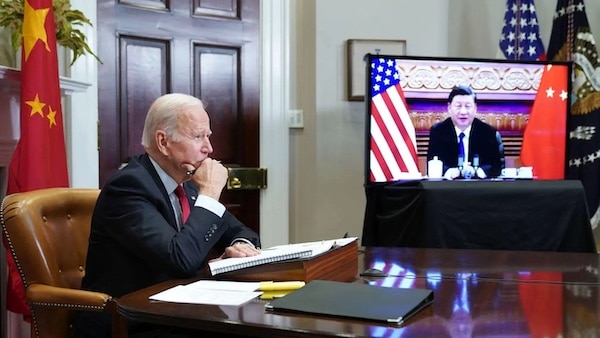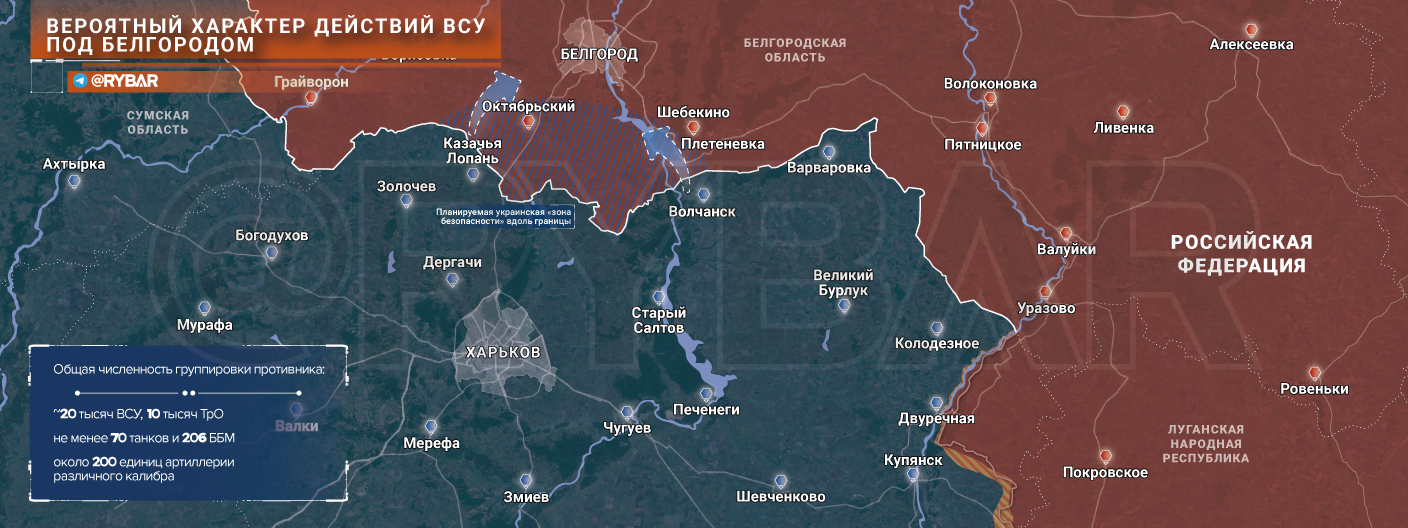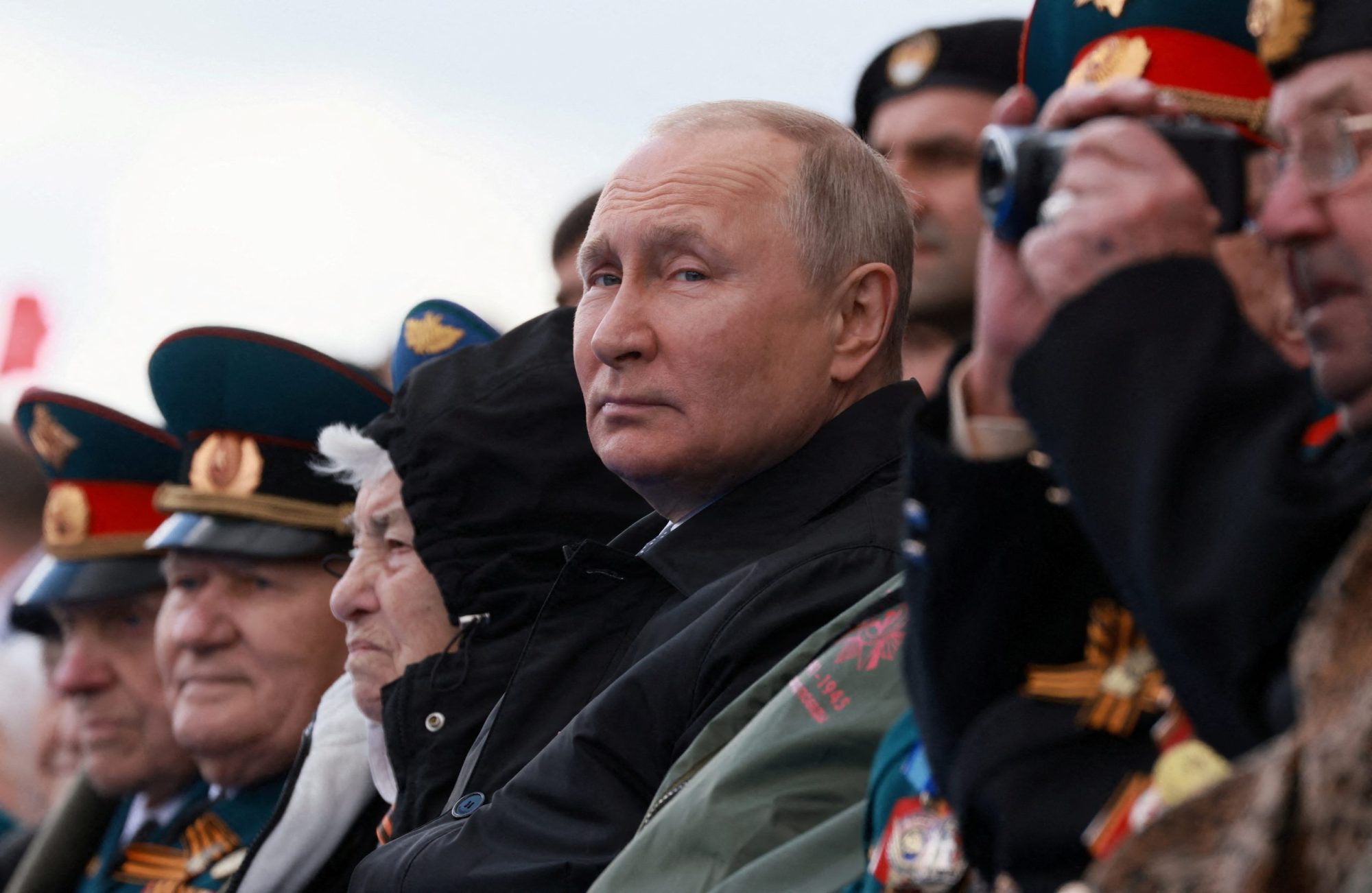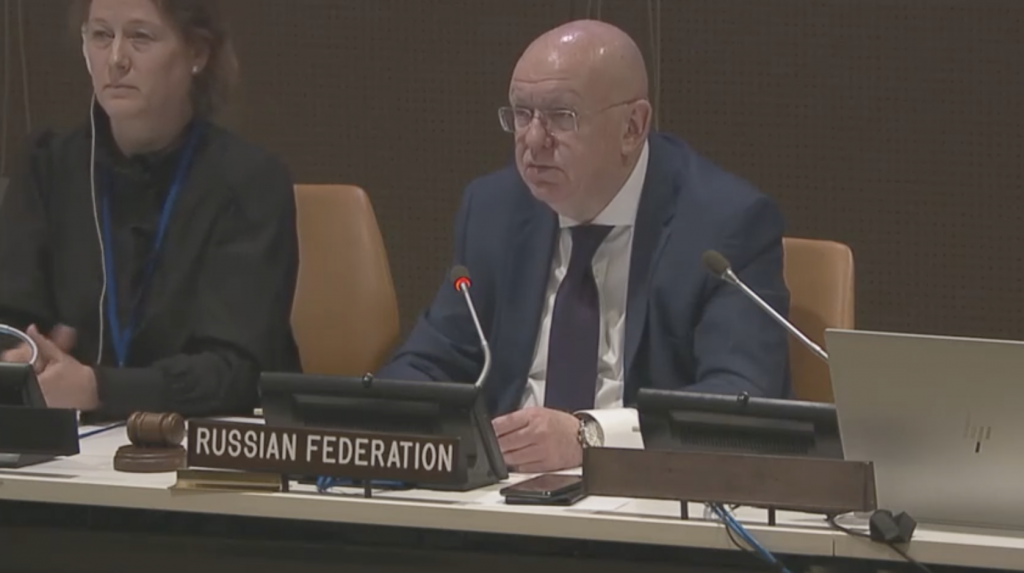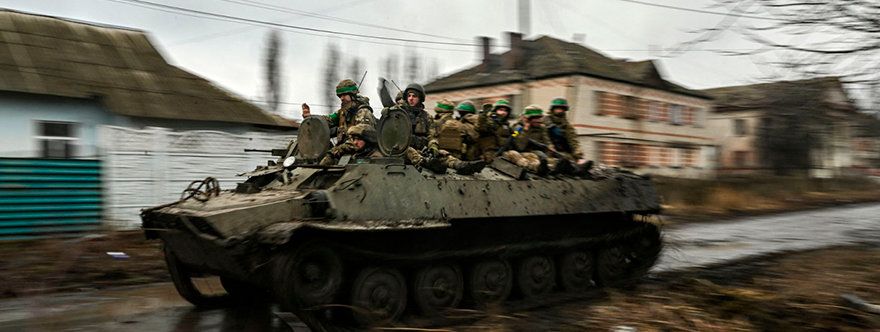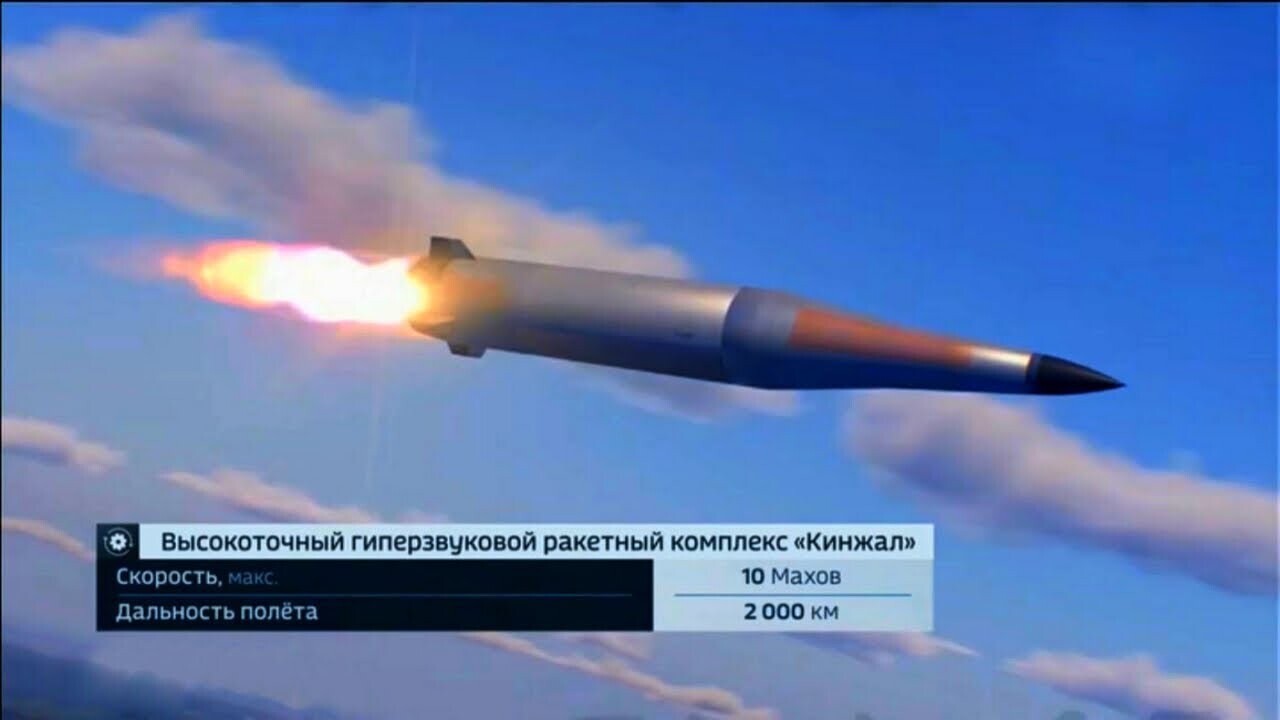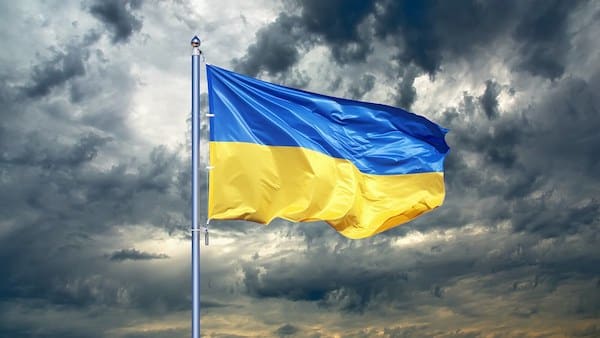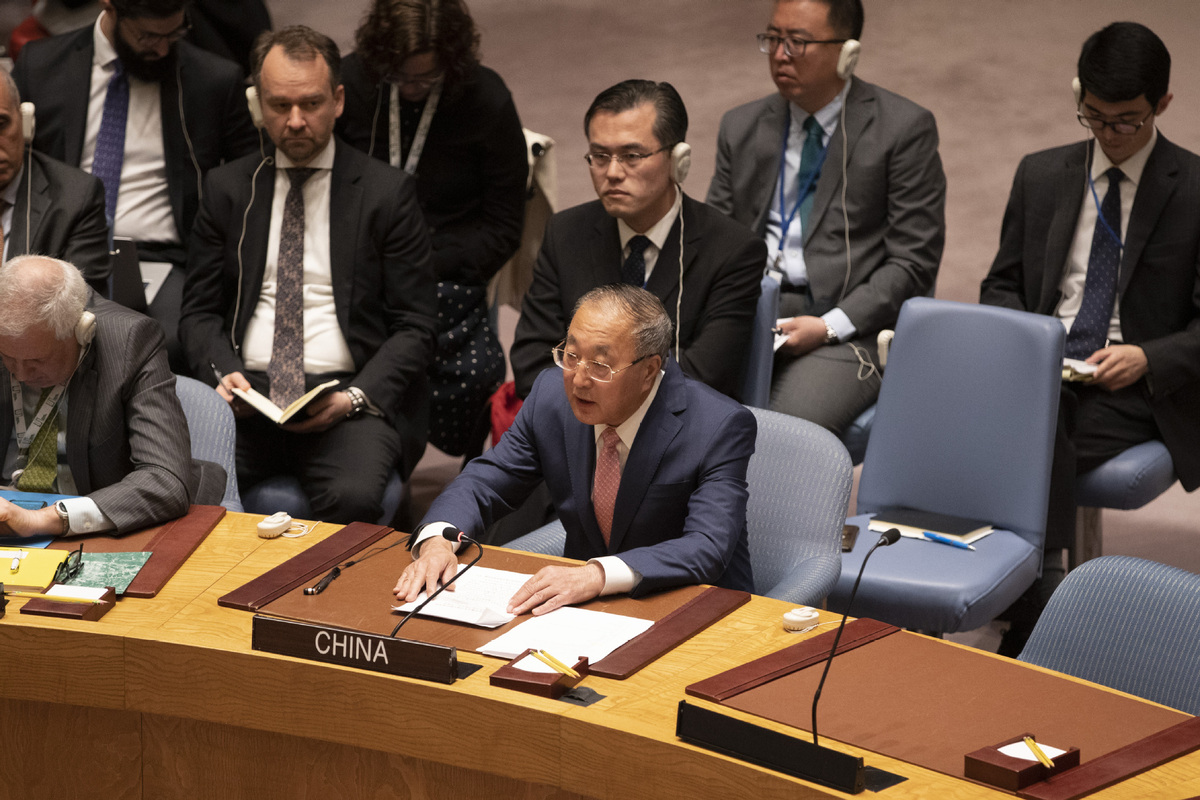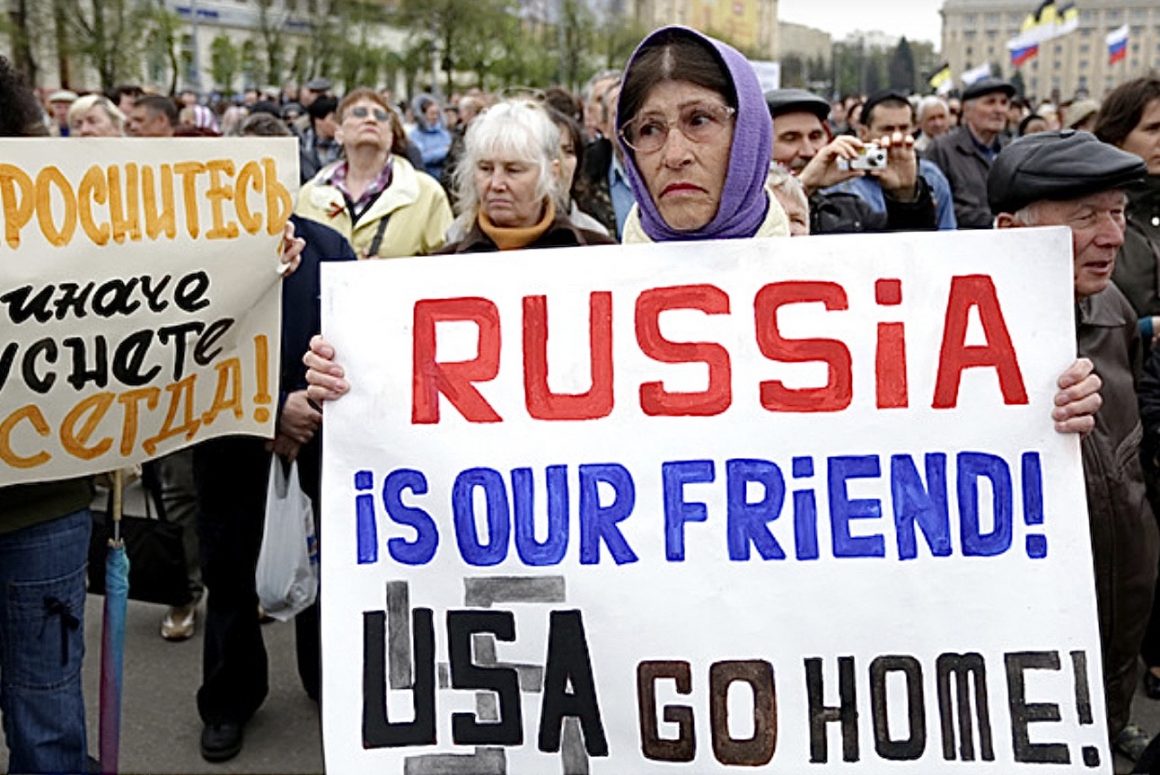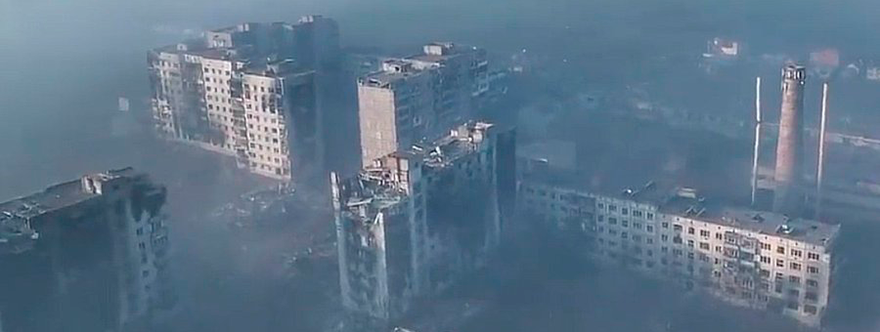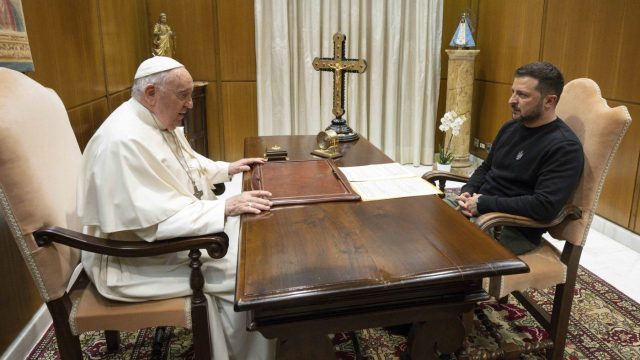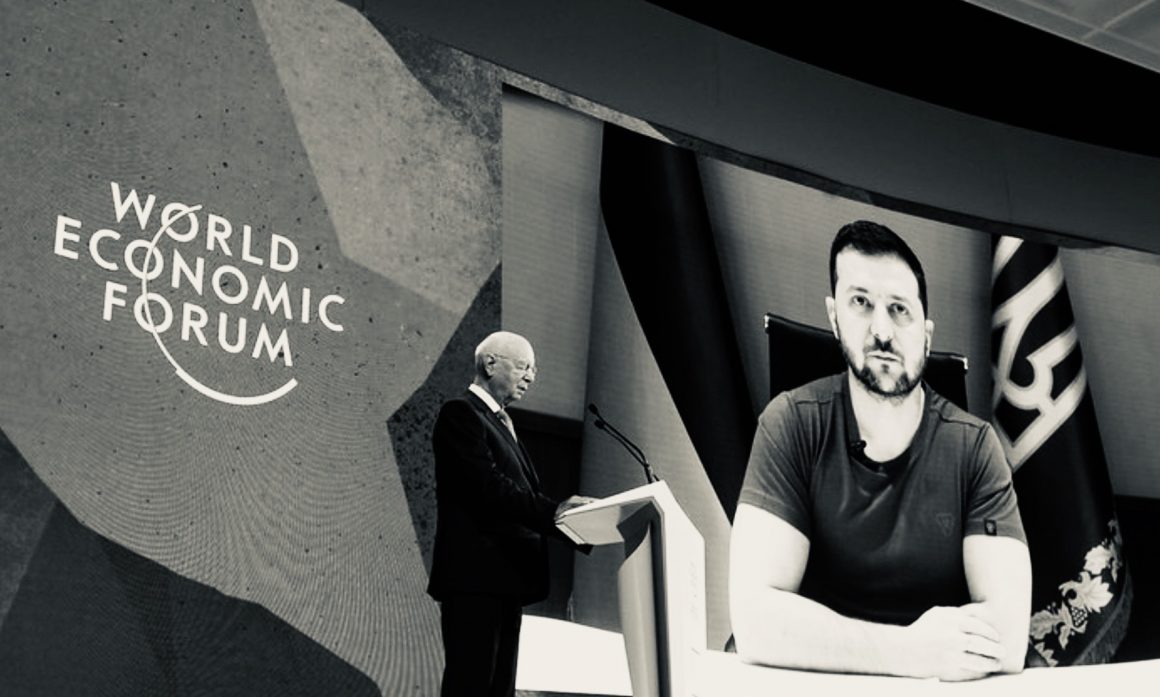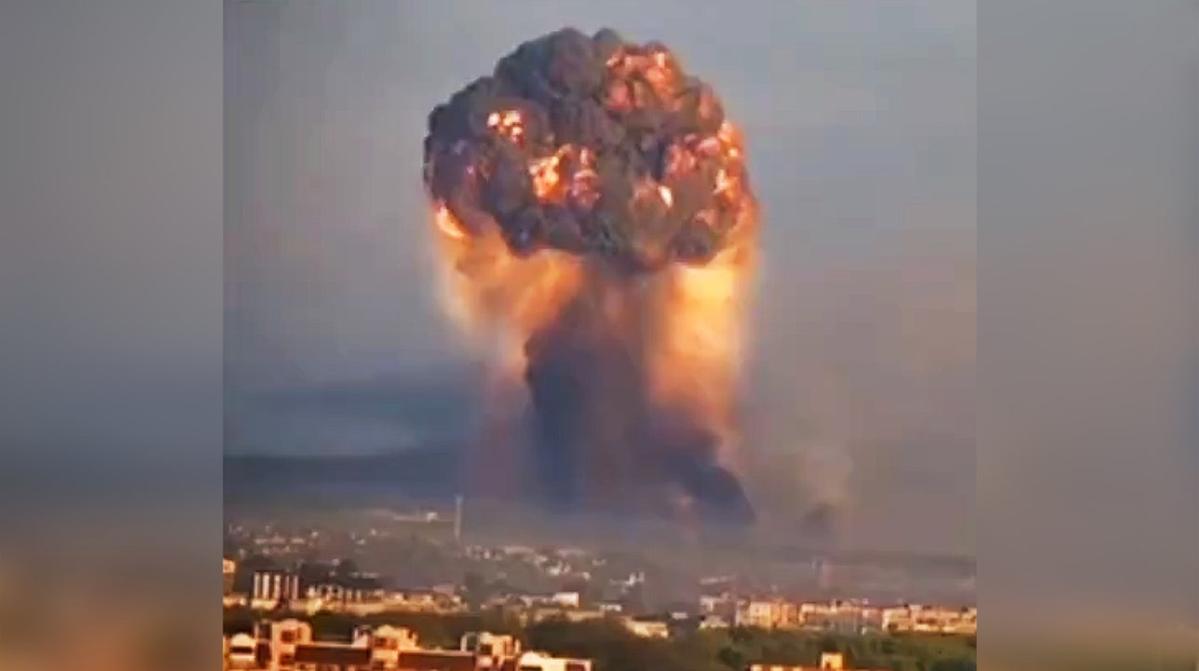POSTED BY @NSANZO ⋅ 05/08/2023
Original article: Alexander Kots / Komsomolskaya Pravda

“We are colleagues, in a sense,” I tell the soldiers of the Khabarovsk brigade. "What place is that?" "Just like you, I too have been accused by the Ukrainian press of what happened in the kyiv region a year ago." Here is a text that I have saved and in which it is black on white: “…he participated together with the heroes of Gostomel ”. Khabarovsk soldiers were also accused of what happened in Bucha. It is a unique case for a Russian division: practically the entire composition of the brigade (the West has only found the 2018 lists, but it has included them anyway) has entered the sanctions list of the European Union. Of course, no one has bothered to look for evidence. For example, I was around the city in March 2022 and I only saw paratroopers there.
“We weren't there,” says one of the officers. “We did not carry out tasks in the city, it was not our area of responsibility. But we knocked them in the teeth somewhere else, so they got offended." I have always been close to the brigade, first near kyiv, and then in Izium. I have met them in the birthplace of the anarchist leader Nestor Makhno, near Guliaipole, which was the center of the rebellion known as majnovschina during the Civil War. This direction is strategic. From here the road to Pologi opens, which I drive towards the front in a traditional Bujanka, an unpretentious vehicle, but one that goes everywhere. Names are passing through the window: Novosevlovka, Stepanovka, Marfopol… I've seen them somewhere, but in reverse order. Exactly! The other day, the Ukrainian Telegram channels claimed that they had advanced 50 kilometers into our territory from Guliaipole through these localities. However, there are no Bradleys, Leopards or crosses on armor here. There are only the sheds destroyed by the Ukrainian artillery, the red tulips growing under them and the obvious presence of the Russian army, which seems frozen in anticipation of the Kiev offensive.
Evidently, the Ukrainian Armed Forces have not broken through any defenses at Guliaipole. Here the line of contact froze a year ago and positional battles systematically take place. In recent weeks, the opponent has been activated and is testing Russian defense formations on a daily basis. Unlike Tokmak, advancing in Pologi is difficult: you have to make it through towns where there are hardly any civilians left, but where there is something to hold on to. It is not defending the field. But from Pologi, it is possible to develop an offensive, not only towards the Zaporozhye region, but also towards the DPR if suddenly the adventurous Zelensky wins and seeks to advance towards Mariupol.
Arrival at the positions is, as is tradition, in the morning, under the cover of the dense fog that has descended from the forest. I notice that the land here seems drier than in the Lugansk region, although it is still wet. However, heavy vehicles can already transit here. My companion limps leaning on a cane. At Izium, he flew out of a tank and has spent several months recovering in a hospital far from the front lines.
The opponent has here advantageous positions in height. In good weather, we could be attacked by snipers, it's practically a shooting gallery. When traveling along the road, you can see the craters from mortar shells, everything is bombed. Our trenches are in the gray zone, behind which the Guliaipole dachas are visible. The city, which gave the world both the anarchist Nestor Makhno and the screenwriter of the film “Wedding in Malinovka” Leonid Yujvid, is only three kilometers away.
“Ukrainian troops fire mortar, artillery and from tanks. But we also work on them”, says the unit commander, who receives us in the trenches. “Sometimes they try to break in from the flanks. The other day we were attacked by a group with two infantry vehicles, supported by a tank and a group of infantry. It was destroyed. Well, they are trying to remove the traps in our direction and that is a direct sign that the offensive is coming soon. But we are ready for it."
If you didn't know that the enemy was 800 meters away, on the other side of the nearest field, you wouldn't realize you were on the front line until the tank on the other side started firing: the sound of the shot comes before the explosion . In general, life at the front is not much different from that on the second line. The unit leader conducts a support visit. There are man-high trenches, lounging sheds, eating sheds, and two dogs hunting mice instead of cats.
"There is movement, up to seven people," says the radio. "Get ready," the commander replies. Two people pull out an anti-tank grenade launcher from under a pile of branches, something both sides here use quite successfully against the enemy. They drag her through the narrow belt of woods to the edge of the field and prepare to fire. "Fire," orders the commander. There is a shot and a few seconds of silence. Then another. And other. "Back". It is the traditional order of the commando, nobody wants to wait for the return fire. “There were seven people digging closer to our positions, they are trying to remove our flanking minefields. Count three or four minutes and your answer will fly”. We go down to the dining room, make tea, and get cookies from a mouse-protected container. “The exit”, points out one of the soldiers. A few seconds later, an explosion is heard somewhere in the field. The radio gives the order to hide in the shelters. "82-millimeter shells," one of the soldiers recognizes only with the sound from the shed. "Normally they shoot six."
It is so, after six explosions, silence returns to the front. Before the fog lifts, it's time to pack for the return trip. Already in the rear, I learn that the residents of the Orejovo area have tried to break through the defense. The opponent used about twenty troops with five infantry vehicles and a tank, but lost their equipment and withdrew. The Armed Forces of Ukraine carry out such sorties daily, they select in which direction to do it. Judging from the fact that kyiv has also increased its methodical raids on infrastructure in the rear, the counter-offensive is coming.
https://slavyangrad.es/2023/05/08/27229/#more-27229
Google Translator
*************
NATO’s Fabulators
Posted by INTERNATIONALIST 360° on MAY 6, 2023
Joshua Rathz
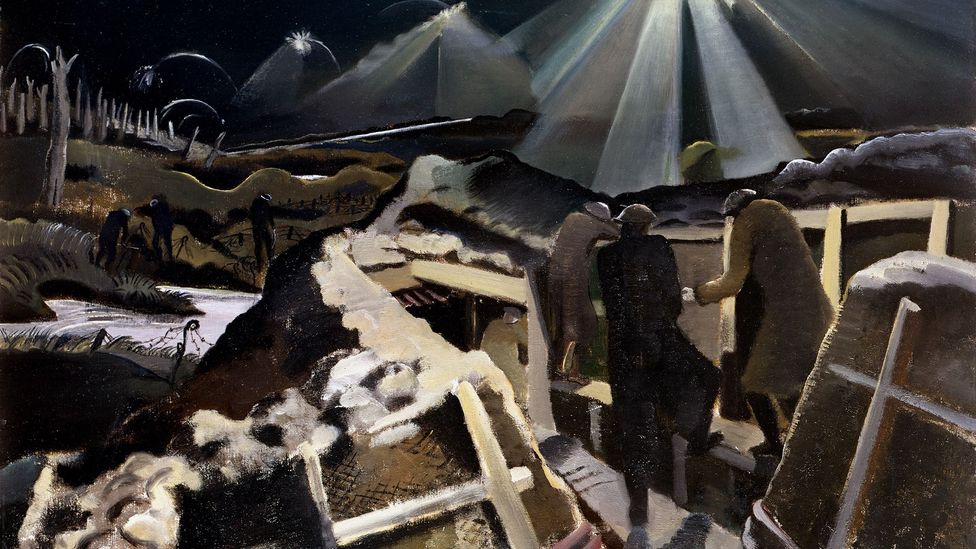
‘That reptile’, Brecht once wrote in his journal, referring to Thomas Mann, ‘cannot imagine anyone doing anything for Germany (and against Hitler) without orders from anywhere’. The Manns had been spreading rumours around Los Angeles that Brecht was Moscow’s pawn: ‘slurs . . . they know full well can do a great deal of harm’. From the first prodromes of the ‘New Cold War’, a similar form of weaponized hearsay has been circulating in the US – with Trump accused of acting as a Kremlin stooge and winning the presidency through its patronage. What once seemed like merely an election-year contrivance of Clinton’s Democrats soon spread to Europe. There, without partisan inflection, it found expression in starker geopolitical terms when, in 2020, the European Parliament initiated an investigation into ‘Foreign Interference in all Democratic Processes in the European Union’.
The report of the INGE Special Committee depicted a pristine European Union threatened by Russian and Chinese designs. America’s extensive activity inside the EU was ignored – its European and African Command headquarters, 70,000 billeted troops, recent history of abduction and torture of EU citizens, use of European territory for CIA dungeons in the course of the War on Terror, industrial espionage and phone-tapping of heads of state, were all unmentionable. Instead, the Committee trained its attention exclusively on NATO’s eastern adversaries, decrying their attempts to ‘weaken and divide the EU’ through disinformation.
Such accusations are well-rehearsed. They are components of a hybrid war model the US has developed since the first decade of this century, in part through a network of NATO think tanks stationed across Europe devoted to the alliance’s expanded portfolio, which includes operations to manage public opinion – in effect the global Innenpolitik of US empire. As political parties have been transformed into administrative rather than mass-membership organizations, such centres of pseudo-expertise increasingly shape respectable politics. They provide readymade accounts of events and distinguish friends from enemies (however impoverished the evidence amassed or manufactured), marketing themselves as trustworthy by affecting an academic propriety. Europe is naturally a focus of such efforts given its geostrategic value for influence over Eurasia – the ‘chief geopolitical prize’ in Zbigniew Brzezinski’s judgment – at whose western extremity lies the ‘key and dynamic players’ of France and Germany. Integration of the greater ‘American-dominated West’ and the effective severing of relations between Berlin and Moscow is being undertaken in preparation for ultimate encirclement of the PRC.
NATO’s cyber warfare – namely digital and internet-based attacks including espionage, propaganda and sabotage of infrastructure – as well as other militarized interventions into civil society, are often presented as novel developments. But in fact they have much in common with US-NATO strategy in the early 2000s, when ‘competitive intelligence’ – the use of allied agencies to launder claims – was employed to heighten a sense of urgency and accelerate the move towards war. Prior to the invasion of Iraq, for instance, Italy’s SISMI played a key role in furnishing the Pentagon with counterfeit evidence, as shown by investigative reporters Carlo Bonini and Giuseppe D’Avanzo. Contemporary hybrid warfare also echoes its forerunners in focussing on domestic or allied populations. Snowden’s 2013 revelations documented GCHQ attempts – a parallel NSA programme must also be assumed – to manipulate the public by dissimulation and simulation.
Yet in spite of such continuities, NATO’s think tanks – comprised of twenty-eight so-called ‘Centres of Excellence’ as well as US State Department-funded outfits like the Bratislava-based GLOBSEC – have clearly stepped-up the modes of propaganda developed over the last quarter century of American warfare. To provide a snapshot of this change, it is worth surveying a few of these NATO-affiliated organizations and their attempts to shape public opinion in line with the alliance’s priorities on its eastern flank.
NATO’s Strategic Communications Centre of Excellence (StratCom), based in Riga and directed by Jānis Sārts of the Latvian Defence Ministry, was founded in 2014 to coordinate diplomatic and public relations as well as information and psychological operations. It was launched in part to repair NATO’s image after the decade-long occupation of Afghanistan. A critical report by retired Canadian colonel Brett Boudreau, ‘We Have Met the Enemy and He Is Us’, found that there was ‘no Allied joint doctrine manual on StratCom’ – only a ‘conflicting or confusing’ set of policies. Accordingly, the Riga centre, given an annual budget of just under €600,000 and sponsored by NATO states on an ad hoc basis, devoted itself to developing the ‘doctrine’ and ‘concept’ of NATO communications, along with education, training and operational support. In 2014 it ran a seminar on the ‘Weaponisation of Social Media’ for ‘Ukrainian and Georgian Government representatives’. It also publishes a biannual academic journal, Defence Strategic Communications, edited from King’s College London.
The basic orientation of the Centre is articulated in Boudreau’s foundational essay as well as various contributions to its journal. ‘We Have Met the Enemy and He Is Us’ called for the elimination of certain ‘firewalls’ – or divisions between disciplines of military communications. Public affairs and psychological operations, foreign and domestic audiences, political and military domains: such previously distinct sub-fields of propaganda should be brought together under joint control. Distinctions between psychological operations designed to manipulate audiences and the ‘value neutral’ dissemination of information in the realm of public affairs, would thereby be formally abolished. ‘The foreign/domestic audience separation’, wrote Boudreau, ‘is a faulty foundation on which to base organisational structure.’ The report furthermore recommended eliminating the division between political and military public affairs offices, so as to liberate NATO military personnel from strictures over directly political interventions.
The pages of Defence Strategic Communications are no less audacious. Two characteristic articles from the 2016 inaugural issue reveal much about NATO’s new publicity strategy: ‘The Narrative and Social Media’ by US Army Psychological Operations Specialist Miranda Holmstrom, and ‘It’s Time to Embrace Memetic Warfare’ by the Softbank-backed financier Jeff Giesea. The former gives an especially stark framing of the contemporary media environment and NATO’s activity within it; the latter demonstrates the extent to which StratCom has openly considered the use of disinformation. Holmstrom, for her part, aims at ‘winning hearts and minds’ via social media by employing ‘simple yet complete narratives that can easily be reproduced’. She asserts that ‘narrative’, as ‘a framework for the plot and setting of a story’, is fundamental to ‘propaganda’ because it is a form of sense-making through which information can be shaped and remembered, and may even foster an irrational response to events. Much like the structure of the fabula in a work of fiction, propaganda uses ‘set-up, conflict, resolution’ to guide the thought and action of a target. This principle can be applied to the ‘horizontal propaganda’ deployed through individual-to-individual contacts, as on Twitter or Facebook. The form solicits activity and participation, and ‘creates the illusion of choice, free will and personal decision-making’. Giesea, meanwhile, advises using pseudonyms to mislead social media users. He recommends ‘more aggressive communication tactics’ and enjoins NATO to boost its capacity for waging ‘memetic warfare’ – or operations tailored to the online universe, in which the stakes are ‘social control in a social-media battlefield’.
StratCom has also taken an interest in the software of private firms, where ‘application programming interfaces’ are recommended for tracking users through the tools developed at the Atlantic Council’s Digital Forensic Research Lab. In a separate report on ‘Social Media Manipulation’, the think tank boasts of having ‘partnered with US Senators Chuck Grassley and Chris Murphy’ to buy interactions on each of their accounts so as to test the public’s responses. A 2020 contribution to DSC, ‘Deepfakes – Primer and Forecast’ by Tim Hwang, focussed on technical innovations of visual disinformation and the use of artificial intelligence in creating convincing false images and videos. Formerly of Google, the MIT Media Lab and RAND, Hwang, who is now at the Center for Security and Emerging Technology at Georgetown, was a participant in a 2016 social media experiment funded by the US’s Defense Advanced Research Projects Agency (DARPA). His article recommends building up ‘connections with the technical media forensics community’ in support of ‘research on the psychological dimensions of deepfakes’.
Founded in Tallinn in 2008, the Cooperative Cyber Defence Centre (CCD) is one of the oldest of NATO-accredited Centres of Excellence, funded and staffed by a roster of EU-NATO and non-EU countries. It deals with the technical aspects of cyber conflict, strategy and law. Since 2009 it has hosted annual international conferences on such topics – drawing hundreds of military, academic and government participants to Estonia – with sponsorship by US software, appliances and services firms including Microsoft.
The CCD produces NATO’s guidelines for cyber warfare, compiled in the Tallinn Manual. In its first edition, the Manual presented 95 ‘rules’ to which states must refer in the event of cyber conflict. Aside from the usual rhetoric about the right to self-defence, the document is notable for its gloss on cyberattacks which cause ‘injury or death to persons or damage or destruction to objects’ – weapons like Israel’s Stuxnet, used against Iranian infrastructure, are brought to mind – and the exemptions it makes for war against civilians. ‘Certain operations directed against the civilian population are lawful’, reads rule 31, including ‘psychological operations such as . . . making propaganda broadcasts’ or analogous operations ‘in the context of cyber warfare’. Elsewhere, the Manual finds the use of ‘ruses’ and ‘false information’ to be permissible.
Central to the CCD’s activity is the organization of regular military exercises. ‘Crossed Swords’ was launched in 2016 as a so-called ‘red-teaming’ drill, in which participants simulate cyberattacks and test the ability of special forces to carry out an offensive ‘full-scale cyber operation’. Since 2018, it has expanded considerably, and now includes the ‘cyber-kinetic’ use of the military – a domain of cyber warfare that can inflict real damage on infrastructure or personnel. Such exercises clearly exceed the CCD’s purportedly defensive mission. ‘Locked Shields’, inaugurated in 2010, is now one of the world’s largest cyber-military drills, enlisting participants from groups in so-called Computer Emergency Response Teams to simulate ‘the entire complexity of a massive cyber incident’. As well as academics, delegates from militaries, defence ministries and police agencies – including the FBI – are party to the war game. Journalists are invited to impersonate themselves in order to lend authenticity to the role-play. Private commercial interests are also present: the CCD for example has formal contracts with Siemens, which allows for the use of its hardware and software, while the firm in turn uses the simulations to study its own weaknesses.
In recent years, the CCD has simulated attacks on a military airport, energy supply systems and central computer networks, along with the vandalism of websites, circulation of false reports, data theft, commandeering of military drones and hijacking of airplane refuelling systems. In 2019, its drill simulated the use of disinformation aimed at ‘sowing doubt’ among a domestic population, and dispatched defensive teams to counter the incursion through social and traditional media channels. As with StratCom, the CCD enjoys the benefits of connections with US think tanks and spy agencies: prominent among its ambassadors is Kenneth Geers, an Atlantic Council Fellow who has worked for years with the NSA and US Navy and served as a ‘global threat analyst’ at FireEye, a Californian private security firm.
Finally, the Bratislava-based GLOBSEC, established in 2005, is the successor to the Slovak Atlantic Commission, which was founded in 1993 to support Slovakia’s accession to NATO. Unlike the Centres of Excellence, it is not overtly geared towards training the military and national security apparatuses of NATO states, but rather addresses Central and Eastern European countries, where it aids NATO’s consolidation and expansion by integrating compradors into the circuits of transatlantic capital and officialdom. This is the purpose of its regular ‘forum’, which GLOBSEC describes as ‘the preeminent international strategic conference on the frontlines of a newly divided world’. (The 2021 gathering featured a discussion between Victoria Nuland and the Moscow correspondent for the New York Times, as well as a session with Alexei Navalny’s Chief of Staff, entitled ‘Democratic Change in Russia: How to increase the Odds?’)
When NATO’s secretary general Jens Stoltenberg announced the ‘NATO 2030’ publicity campaign, GLOBSEC contributed a series on ‘geopolitical competition in the information landscape’. It called for increased public-private collaboration to combat Russia and China, asserting that NATO must accelerate the subvention of small and medium-sized enterprises and NGOs. For this purpose, Riga’s StratCom was proposed as a conduit; it could ‘engage in enhanced interaction with citizens, including addressing disinformation, and promoting media literacy, and more.’ The think tank also concluded that ‘NATO’s storytelling’ must be sharpened. As a complement to its regular output of non-fiction media, it should consider branching out into fiction – recruiting studios and publishers in the production of films, books and video games. NATO should appear in ‘popular Hollywood movies or online streaming franchises’ and enlist a greater number of ‘creative and unconventional surrogates’. No culture industry asset can be discounted. Academia is another area where GLOBSEC is active. Its Slovak Aid fellowship integrates Belarusian specialists into the ranks of capitalist management by assigning them Slovakian mentors – namely, the economists and industrialists who oversaw the shock liberalization of the 1990s. GLOBSEC’s outposts in the Western Balkans act as the publicity arm of NATO’s eastern enlargement, most recently helping to facilitate the absorption of North Macedonia in 2020.
For all of the talk of a New Cold War, the political, economic and diplomatic coordinates of contemporary militarism are distinct from those of the twentieth century. Neoliberalism remains a global pensée unique, however battered its reputation is by successive economic crises. And the largest powers in the current face-off – the US, Russia and China – have either become more unequally matched in military affairs (US-Russia), or they have become essentially interdependent amid a far more fragile regime of global capital accumulation (US-China).
States must also contend with a number of internal stresses. One is the growing inability of nearly all societies to reproduce adequate employment and living standards for large segments of their populations – as can be seen in the rustbelts of both China and the US, the hinterlands of Europe and the downward mobility of educated urban populations. The political consequences are that states face the erosion of legitimacy and the eruption of ‘populist’ or other discontents. Flagging economic performance has led capital’s dependence on the state to become increasingly direct: where profitable investment in production is difficult, upward redistribution through corruption has taken hold, in a process anatomized by Robert Brenner. Sectors of capital closest to the state – finance, plus those which orbit the military, police and intelligence services – stand to benefit economically, but they may also anticipate that society will become increasingly unmanageable without greater levels of repression. Efforts to secure rule by consent today encounter domestic as well as international opposition, as rival sectors within national economies find that their interests as much in conflict with one another as with international competitors. The upshot is concentration for politically well-connected firms, and a move towards confrontation abroad.
In the US, atop this sits a layer of imperial strategists committed to the constraint and management of China along with the integration of Russia into the American sphere of influence. Until 2018, war between America and its designated Eurasian rivals was not so openly anticipated. Today, their independent and uncooperative paths of development – forced by the economic realities putting all societies under pressure – have become an ineluctable source of friction. A coordinated revaluation of the yuan, or a rise in Chinese wages, might boost US manufacturing competitiveness, but would undercut the PRC’s world-historic export-led growth model, dependent as it is on combining rock-bottom labour costs with high-tech assembly. At the same time, the tightened US noose around Russia – by depriving its industry of cheap energy – obstructs Germany’s profitable export to China of its machine tools and their services: a lifeline during the last decade’s eurocrisis.
As the relationship between the major zones of global capitalism has capsized into open and sustained antagonism, the shaping of European public opinion has acquired greater significance. Overdetermined by domestic and international pressures, issuing from a zero-sum contest between national manufacturers and across different sectors, Washington is above all concerned with the consolidation of Europe as an Atlanticist stronghold. Here, Ukraine acts as ‘a geopolitical pivot’, as Brzezinski put it. Without it, ‘Russia ceases to be a Eurasian empire’.
For a few large European companies, this security programme has clear economic benefits. But for the majority of the European population – who are instructed to ‘freeze for peace’ – its costs will be significant. The destruction of vital domestic industries and inflation of military budgets will follow the decades of austerity inflicted on the social state. Injunctions to intensify ‘memetic’, psychological and information warfare must be understood in this context. The exercises in digital sabotage undertaken by the CCD and its affiliates indicate that NATO’s propaganda is ultimately designed to condition the populations of client states to accept their fate as decreed by Washington. Since the War on Terror, the alliance has shown itself capable of impressive adaptation, learning from its self-diagnosed errors in a mode of low cunning. Anti-war forces could do worse than recognize this last point and get habituated to cruder thinking.
https://libya360.wordpress.com/2023/05/ ... abulators/
*******
BROADCASTING THIS EVENING FROM THE KREMLIN ROOF FOR TNT RADIO’S WAR OF THE WORLDS

By John Helmer, Moscow
@bears_with
To an alien from another planet, where curiosity starts with naivety, the question is being asked why earthlings calling themselves the state media of Russia report analysis of an attack on the most obvious symbol of their state from two Americans who have spent their active service careers sworn to defeat what that symbol stands for — one of them in the Central Intelligence Agency (CIA), and the other in the US Marine Corps (USMC).
Having retired years ago, and lacking access to the secret CIA and USMC intelligence which was once their stock in trade, everything they know about Russia comes – they sometimes admit – from Russia.
The naïve but curious alien might therefore be forgiven for asking the earthlings to explain why the following headlines in the Russian state news agency Sputnik could possibly be believable – at least to an alien: “Former CIA Officer Reveals Possible Motive Behind Kremlin Drone Attack”; and “Scott Ritter on Kremlin Strike: Zelensky Gov ‘Now a Legitimate Target’”.
How could these two retired warfighting soldiers against Russia possibly know?
The answer to this, the alien acknowledges, he can’t answer directly. So he has asked twelve naïve questions in this TNT Radio broadcast of War of the Worlds.
Question 1. How many drones, one or two, detonated over the Senate building dome in the Kremlin on the evening of May 2-3? Answer: Two (lead images, left and centre). Click to watch the first drone attack here. The first and second drone videoclips have been presented in sequence by Andrew Napolitano here.
Question 2. How much time elapsed between the drone detonations? Answer: About 15-16 minutes.
Question 3: From what direction and on what trajectory did each of the drones fly at their target? Answer: The first from the northeast; the second from the southeast.
Question 4: At what speed? Answer: Slow. Official investigators know precisely the speed and also flight time from launch.
Question 5: Measured by the visual flame, smoke, sound, and debris on the dome and on the ground below, what was the relative explosive power in TNT equivalent for each drone, if any explosive at all? Answer: Next to no explosive payload, possibly none at all.
Question 6: Were security men on the dome roof just before the first drone detonation, between the first and second detonations, or after the second had occurred? Answer: Evidence inconclusive.
Question 7: What photographs of the drone debris on roof and ground have been published? Answer: None.
Question 8: From the debris on the dome roof and on the ground below what was the source of the explosive? Answer: no information after more than 72 hours.
Question 9: What was the type of drone, model, manufacturer, and country of origin? Answer: no information after more than 72 hours.
Question 10: From what has been learned from the debris, the trajectory records, the flight speed, and the control mechanism, what were the launch locations in the Moscow area or outside it, and the distance from launch to the Kremlin? Answer: no official information released yet.
Question 11: The drones in the video records of the attack appear to be relatively short-range. Is there any CCTV or witness surveillance video recording from the surrounding areas from which the drones could have been launched? Answer: No official information. This social media source claims without corroboration that “the drones were spotted in the suburbs”. The source also concedes drone- spotting false alarms are common.

Question 12: Have any specific suspects been identified? No.
Substituting for answers to these questions, western media interpreters have focused on motive. They claim to interpret the drone attack as either a Ukrainian provocation, which will now provide the rationale for a Russian retaliatory strike to decapitate the Ukrainian leadership. Or alternatively, a false flag operation to revive flagging Russian public support for the war, or to escalate Russian targeting west of the Dnieper River.

Source: https://sputnikglobe.com/20230504/
For more state media coverage of the incident from Sputnik News, click to read and https://sputnikglobe.com/
There is no evidence in the Levada Centre polling reported over the past fortnight of any change of Russian public sentiment, neither in approval of President Vladimir Putin’s performance — above 80% for the past six months — nor in support of the Russian Army’s conduct of the war.
Putin is on record as telling French and Israeli officials for a year now there would be no Russian targeting of President Vladimir Zelensky. This is notwithstanding endorsements of Putin’s assassination by US and Ukrainian officials; and the targeting of Putin in the March 17 indictment by the International Criminal Court for alleged war crimes by the president.
The reason for the non-retaliatory assurances in Russian policy has been misunderstood. It is the Russian assessment that there can be no motive for Moscow since Zelensky is so plainly a US-directed puppet, his retention in office, replacement, or removal is up to the US to decide – and it suits Russian war policy that it will remain so. Putin’s spokesman, Dmitry Peskov, made the point elliptically in his comment on the motive behind the drone attack. “We know very well that decisions about such actions, about such terrorist attacks, are made not in Kiev but in Washington…This is also often dictated from across the ocean … In Washington they must clearly understand that we know this.”
In the May 3 morning, just hours after the attacks, former president Dmitry Medvedev, now deputy head of the Security Council, issued a different assessment. “After today’s terrorist attack, there are no options left other than the physical elimination of Zelensky and his clique.” For the achievement of Ukrainian capitulation, Medvedev added, Zelensky is “not even needed for signing an instrument of unconditional surrender. Hitler, as is known, did not sign it either. There will always be some substitute.”
The Security Council usually meets Putin every week on Fridays, but it skipped its session on April 28. On May 5, two days after the drone attack, the council meeting was reported in the Kremlin communiqué as discussing “a number of issues related to preparations for Victory Day celebrations”. Absent from this session were Defense Minister Sergei Shoigu, who was reportedly on an armour inspection tour in Nizhny Novgorod, and Foreign Minister Sergei Lavrov, who was in India.
Igor Strelkov (Igor Girkin), a well-known critic of Russian policy towards Kiev and of operational performance by the General Staff, has published a mocking interpretation of the drone attack hinting at different motives, different perpetrators:

For more on the Tsar Cannon of 1586, read this.
“Ukrainian militants are trying to disrupt negotiations on the extension of the ‘grain deal’. The wrong ones were attacked! It’s barbaric to bomb cultural objects! But we are not like that! Our president works in a bunker! Ha-ha-ha! And the stupid Ukrainians flew to bomb the Kremlin! Ha-ha-ha! The formidable Russian Silence is our response to any provocations! Both unmanned aerial vehicles have been shot down — there is nothing to worry about! And the smoke was from the Tsar Cannon from which they were shot down. The Kremlin’s air defence is in safe hands! Perhaps it was not even Ukrainian nationalists who did it, but their secret accomplices, the ‘turbopatriots’!”
Listen now to the broadcast, first segment: https://tntradiolive.podbean.com/e/war- ... lds-6-may/

In the second and third segments, two recent public statements by Yevgeny Prigozhin, chief executive and commander of the Wagner military company, are analysed.
In the first, filmed on the evening of May 3 or 4, Prigozhin attacked Shoigu and General Valery Gerasimov, Chief of the Russian General Staff, with a stream of obscenities, accusing them of depriving the Wagner units of ammunition and causing rising combat deaths; Prigozhin displayed the corpses in his film.

Source, with English subtitles (expletives deleted).
In his second video statement, apparently supplied to the Moscow press on the morning of May 5, Prigozhin announced the withdrawal of the Wagner units from Artemovsk (Bakhmut) on May 10.

Source: https://www.rbc.ru/
Public criticism by Russians of the conduct of the campaign in the Ukraine by military leaders is neither new nor exceptional. Prigozhin, as well as the Chechen president Ramzan Kadyrov, have gone to the press before in criticism of operational plans, supplies and money – and in hope of drawing more for themselves. However, this is the first display of such vitriol addressed by a senior combat unit commander to Shoigu, Gerasimov, and also the “Supreme Commander in Chief” – Putin.
The open display has provoked in Moscow much more detailed analysis of rates of ammunition use and resupply, casualty rates, and other operational issues than is allowed in Washington or in Kiev. The US Joint Chiefs of Staff, for example, have stopped all press releases, meeting readouts, and other news bulletins since the Pentagon Papers leaked particulars of their negative situation reports on the Ukraine battlefield on April 6.
In a regular military chain of command, Prigozhin’s statements amount to military court insubordination. As a civilian, the wording of Prigozhin’s attacks are a violation of the newly enacted law against “public actions aimed at discrediting the use of the Armed Forces of the Russian Federation in order to protect the interests of the Russian Federation and its citizens, maintaining international peace and security, including public calls to prevent the use of the Armed Forces of the Russian Federation for the specified purposes, or to discredit the performance by state bodies of the Russian Federation of their powers outside the territory of the Russian Federation in the specified goals.” Enforcing the earlier, year-old version of this law, prosecutors have sent 4,800 cases to court. On conviction, the legislation provides for heavy fines and imprisonment of up to five years.
That Prigozhin was confident of his immunity from prosecution in launching his tirade indicates official protection. His swearing, gesticulating, and facial contortions indicate staging, not for the Russian audience but for US and Ukrainian commanders and the western media. They are reporting Prigozhin’s statements as evidence of demoralization of Russian army units, logistical failures, insufficient ammunition, and vulnerability to the planned Ukrainian offensive due to start this month. The withdrawal from Artemovsk/Bakhmut by the Wagner forces also appears to be luring fresh Ukrainian reinforcements into the area.
“On May 10, 2023, we are forced,” Prigozhin’s second statement claimed, “to transfer [our Bakhmut] positions to the units of the Ministry of Defense. On March 16, when things didn’t go according to plan, we were asked to help. On March 19 [2022], the units arrived from Africa and immediately entered the battle on the run. We entered at the toughest place, in the centre of the fortified area of Popasnaya, and by May 9, 2022, we had captured the settlement. Then, in order to save the army, which fled shamefully from the Izyum and the Krasny Estuary, they occupied the front line for more than 130 kilometres and restrained the onslaught of the enemy. On October 8, in order to give the army a break, in order to draw all the [Ukrainian] forces on to themselves, the operation ‘Bakhmut meat grinder’was launched. Selfish Russian individuals have claimed success and a good result, and that has caused some figures, pseudo-military bureaucrats from the Ministry of Defense, to be crushed by a goon, speaking in Russian. We received no more than 30% of the needs, so our losses were much higher than they should have been. A month ago, they stopped giving us ammunition and we get no more than 10%. We were going to capture Bakhmut by May 9. But after seeing this, the pseudo-military bureaucrats actually stopped all deliveries from May 1. They sit and shake their fat bellies and think that they will go down in history as the winners. I am officially informing the Chief of the General Staff [Gerasimov], the Minister of Defense [Shoigu], the Supreme Commander-in-Chief [Putin]: my guys will not bear losses in Bakhmut, uselessly and unjustifiably, without ammunition. From May 10, we are leaving Bakhmut. We have still to take 2.5 kilometres out of 45. But if, because of your petty envy, you don’t want to give victory to the Russians, that’s your problem. We are waiting for the order to leave Bakhmut. Until the 9th, despite the fact that we have almost run out of ammunition, we will stay in Bakhmut so that on this sacred holiday we do not shame the brilliance of Russian weapons. Then we will go to the rear camps. We will wait until the people of Russia need us again. I think it’s about to happen. Because you are not able to manage the responsibility placed on you.”
Peskov responded in non-committal fashion: “Of course, we have seen it in the media. But I can’t comment on it because it concerns the course of the special military operation.”
Was Prigozhin running a deception operation aimed at Kiev and Washington? For earlier assessment of the Tar Baby lure in Russian military operations, click to read this from April 2022:

Shortly after Saturday’s TNT radio broadcast went to air, Prigozhin published a third statement. This sets out in professional detail and tone his case for Wagner’s combat requirements in the Bakhmut battle, and at rest camp, following the Wagner withdrawal planned to begin on May 10. Chechen units will replace the Wagner forces at the same time, it has been announced to the press.
Prigozhin’s new statement runs for 41 paragraphs, 1,800 words, without a single expletive. In length and construction it is unlike any verbal or written text Prigozhin has made public before.
Prigozhin repeats the line of criticism he has made before of Defense Ministry planning and army operations, but he acknowledges at the same time the limited operational role the ministry (Shoigu) and General Staff (Gerasimov) have assigned Wagner – with Prigozhin’s agreement. “Operation Bakhmut Meat Grinder [was] an assault on the settlement of Bakhmut in order to provoke Vladimir Zelensky to throw in as many forces as possible to hold Bakhmut. In Bakhmut, we pulverized the Ukrainian armed forces [AFU], hence the name – ‘Bakhmut meat grinder’. The purpose of the operation…was to enable the regular units of the Russian army to occupy advantageous defence lines, to mobilize, retrofit, train personnel and increase their combat potential. The term of the operation, decided with Army General S[ergei] Surovikin, was agreed for a period of 6 months (conditionally until April 8, 2023).”
The assignment for Wagner was thus already coming to its operational close last month; the date of withdrawal Prigozhin had earlier agreed to with Shoigu and Gerasimov meant the cutoff of fresh ammunition deliveries which Prigozhin admits took effect on May 1.
“The settlement of Bakhmut has no strategic significance for further progress to the west,” Prigozhin went on. “Of strategic importance for the advance of the Russian army is the capture of the settlements of Kramatorsk, Slavyansk, Druzhkovka, Konstantinovka – the ‘Donbass Ring’, to the west of which flat territories open up, in which it is difficult for the AFU to maintain defence in the event of an offensive by superior forces of the Russian army…It should be noted that the Operation Bakhmut Meat Grinder was designed principally, not to capture the settlement of Bakhmut, but to grind up the units of the Armed Forces of Ukraine and organize a respite for the Russian army to restore combat capability. The Bakhmut Meat Grinder has fully fulfilled its task.”
Is this Prigozhin’s admission that his role in the Battle of Bakhmut had served the tar-baby strategem? If so, the reduction in ammunition supplies – what he calls “shell hunger” – was part of the operational plan he had agreed in advance, more than six months ago. And if that’s so, then the vituperation of Prigozhin’s first and second statements was more of the same tar-baby ploy; that is, deception for the enemy.
The combat operations calculus presented in the new Prigozhin paper is theoretical without revealing Russian operational intelligence of the Ukrainian combat capabilities inside the Bakhmut battlefield; nor the air, artillery and other infantry support provided on the flanks of the Wagner units by the regular army forces. Prigozhin has also left out of his published calculation the attrition on the Ukrainian side. How that severely reduced troop force, running out of ammunition and fresh arms, could inflict the increased casualty rate among the Wagner forces Prigozhin doesn’t explain.

https://johnhelmer.net/broadcasting-thi ... more-87952
***********
Artemovsk. 07.05.2023
May 8, 0:43

Artemovsk. 07.05.2023
1. In the city, PMC "Wagner" continues to storm the block of high-rise buildings on the western outskirts.
Today, attacks on the last fortifications of the Armed Forces of Ukraine + intensified by the evening, in addition to Artemovsk, they began to cover Bogdanovka, Orekhovo-Vasilyevka, Chasov Yar and other villages to the west of the city. Also during the day there were strikes against the Slavic-Kramatorsk agglomeration.
Fights in the city are in the nature of squeezing the enemy out of the city house by house. According to Prigogine, no prisoners are taken. The shells for the Wagner seem to have been allocated, which the enemy also notes, complaining about the increased fire damage of the APU grouping in the city and west of Artemovsk.
2. From the point of view of logistics, the situation of the operational encirclement of the AFU grouping in the city remains. All roads to the city are shot through, which leads to regular losses in vehicles to the west of the city. Nevertheless, the enemy, despite the losses, is trying to hold on to supplies and even drives additional equipment into the city to replace the destroyed one.
Rumors that the Armed Forces of Ukraine in Artemovsk have run out of equipment do not correspond to reality. There are also tanks and AFVs.
3. Khromovo, Bogdanovka, Orekhovo-Vasilyevka, Krasnoye, Novomarkovo - under the Armed Forces of Ukraine. Our attack aircraft have not yet entered these villages.
Syrsky said today that the task is to keep Artemovsk at least until May 9th. In fact, they repeat the situation with the agony of the remnants of the Mariupol group of the Armed Forces of Ukraine at Azovstal, which was also given the task last year not to capitulate until May 9, after which it capitulated shortly after the holidays.
However, Prigozhin has already reported that there is no task to take the city by the date. The primary task is to grind as many forces of the Armed Forces of Ukraine as possible while the Battle of Artyomovsk is going on.
PS. At night, Hours Yar and Artemovsk are equalized with cast iron.
Also, arrivals in the region of Konstantinovka and Kramatorsk
Broadcast of hostilities as usual in Telegram https://t.me/boris_rozhin - who are interested, subscribe
https://colonelcassad.livejournal.com/8341471.html
Google Translator
************

Red Square Kremlin Historical Museum Resurrection Gate Kazan Cathedral Photo Wallpaperflare | MR OnlineRed Square, Kremlin, Historical Museum, Resurrection Gate, Kazan Cathedral. (Photo: Wallpaperflare)
U.S. media promotes absurd claim that Russia staged attack on Kremlin
Originally published: Defend Democracy Press on May 7, 2023 by Defend Democracy Press (more by Defend Democracy Press) | (Posted May 08, 2023)
Following Wednesday’s drone attack on the official residence of Russian President Vladimir Putin, the U.S. media sprang into action to promote the ridiculous claim that Russia staged the attacks.
Among the headlines that appeared Thursday were:
“Alleged Putin assassination is ‘false flag’ orchestrated to bolster Russia’s war effort, experts claim”—Fox News
“Kremlin Drone Attack ‘Likely’ Russia False Flag: U.S. Think Tank”—Insider
“False flag? Analysts say Russia ‘likely staged’ Kremlin drone attack it blamed on Ukraine and the West”—CNBC
These articles appeared to be an effort on the part of the U.S. media to walk back statements made by Secretary of State Antony Blinken and Press Secretary Karine Jean-Pierre Wednesday, both of whom refused to distance themselves from the assassination attempt or even declare that the assassination of Putin would be illegitimate.
Asked what the position of the U.S. was on “such attacks on leadership,” Blinken replied,
These are decisions for Ukraine to make about how it’s going to defend itself.
The entire U.S. media simply ignored these statements, rather promoting the claim that the attacks were not an assassination attempt, that Russia staged them, or both.
Many of the articles citing the claim of a “false flag” were based on declarations by the pro-war U.S. think-tank the Institute for the Study of War (ISW), which wrote Thursday that “Russia likely staged this attack in an attempt to bring the war home to a Russian domestic audience and set conditions for a wider societal mobilization.”
As evidence, the ISW cited the claim that Russia quickly asserted that drones carrying explosives over the residence of the Russian president were an assassination attempt, and that Russian air defenses would not have allowed the drones to fly so near the Kremlin.
It concluded,
The rapid and coherent presentation of an official Russian narrative around the strike suggests that Russia staged this incident in close proximity to the May 9th Victory Day holiday in order to frame the war as existential to its domestic audience.
This amounts to the entire argument for the claim that Russia staged the attack.
By contrast, the reality that the attack on the Kremlin was carried out by Ukraine was bolstered by the fact that the Ukrainian Post Office issued a stamp depicting the burning Kremlin within hours after the operation.
Colonel Alexander Vindman, a leading figure in the run-up to the war, hailed the attack, declaring that it “demonstrates how vulnerable Russia really is.” He continued,
The most important thing about drone strikes on the Kremlin is the shear [sic] embarrassment for Putin. He looks terribly week [sic].
The declarations that Russia was responsible for the attack on the Kremlin follow the pattern set after the September 26, 2022, bombing of the Nord Stream pipelines, after which the U.S. media declared that Russia was responsible for an attack on its own pipelines.
Following the October 8, 2022, attack on the Kerch Bridge, the August 20, 2022, assassination of Darya Dugina and multiple bombings inside Russia, Ukrainian officials denied they were responsible, before accounts in the U.S. press attributed responsibility to the Ukrainian secret service.
U.S. officials were at pains Thursday to distance themselves from the attack on the Kremlin. Speaking to Morning Joe, White House national security spokesperson John Kirby said:
There was no involvement by the United States in [the Kremlin attack]. Whatever it was did not involve us… We had nothing to do with this.
Kirby’s claim that the United States had no involvement in the planning of the attack is undermined by the content of leaked Pentagon documents made public earlier this year, showing that the United States possesses both advanced knowledge of and veto power over Ukrainian attacks inside Russia.
In an article published April 24, titled “At U.S. behest, Ukraine held off anniversary attacks on Russia,” the Washington Post wrote,
In February, with the first anniversary of Russia’s invasion of Ukraine days away, officials in Kyiv were busy making plans to attack Moscow.
The article continued,
On Feb. 22, two days before the anniversary, the CIA circulated a new classified report: The HUR [Ukrainian intelligence directorate] ‘had agreed, at Washington’s request, to postpone strikes’ on Moscow.
On Thursday, Russian officials made increasingly categorical declarations that the attack was directed by the United States.
“Attempts to disown this, both in Kyiv and in Washington, are, of course, absolutely ridiculous,” said Kremlin Press Secretary Dmitry Peskov.
We know very well that decisions about such actions, about such terrorist attacks, are made not in Kyiv but in Washington.
Russian Ambassador to the U.S. Anatoly Antonov added,
How would Americans react if a drone hit the White House, the Capitol or the Pentagon. The answer is obvious to every politician, as well as to the average citizen: the punishment will be harsh and inevitable.
Ukrainan President Zelensky continued to travel in NATO territory on Thursday, meeting with officials from the Baltic countries. Zelensky also visited the International Court of Justice in The Hague, in the Netherlands, after which he gave a speech denouncing Putin.
Finland joined NATO last month, doubling the military alliance’s border with Russia overnight. NATO is surging troops to Russia’s borders alongside the escalation of the Ukraine war. Critically, the leaked Pentagon documents released earlier this year showed that NATO sees its operations both inside Ukraine and in NATO members states as interoperable, and there are over 150 NATO troops deployed inside Ukraine.
https://mronline.org/2023/05/08/u-s-med ... n-kremlin/
